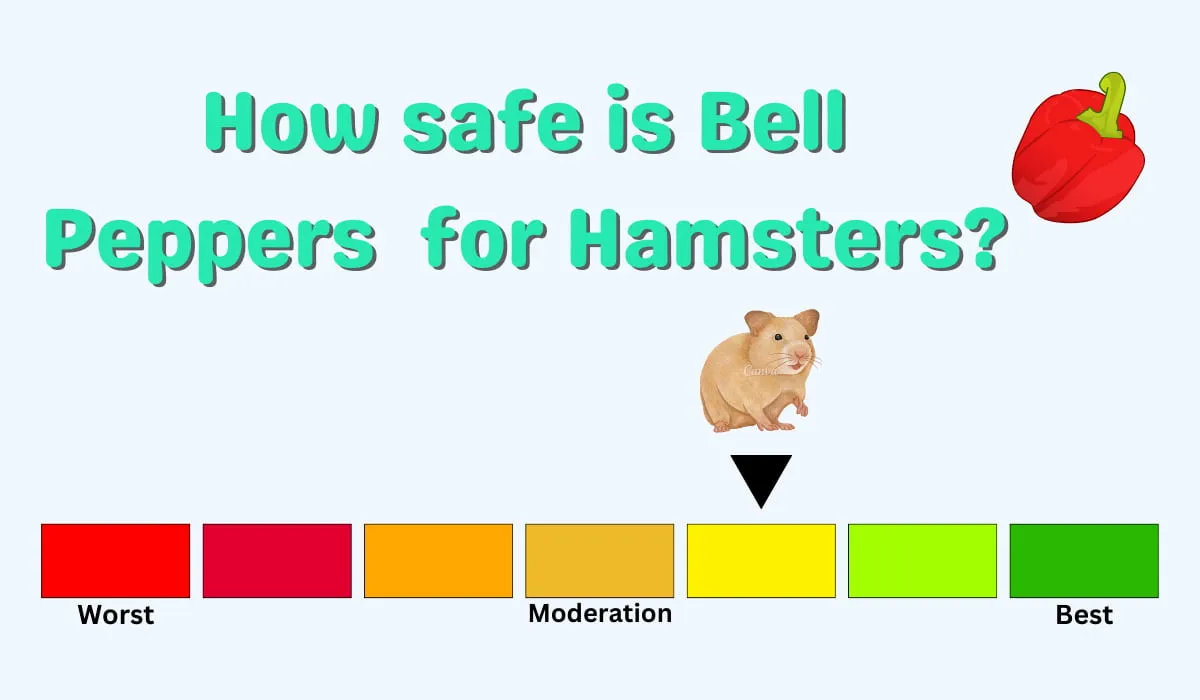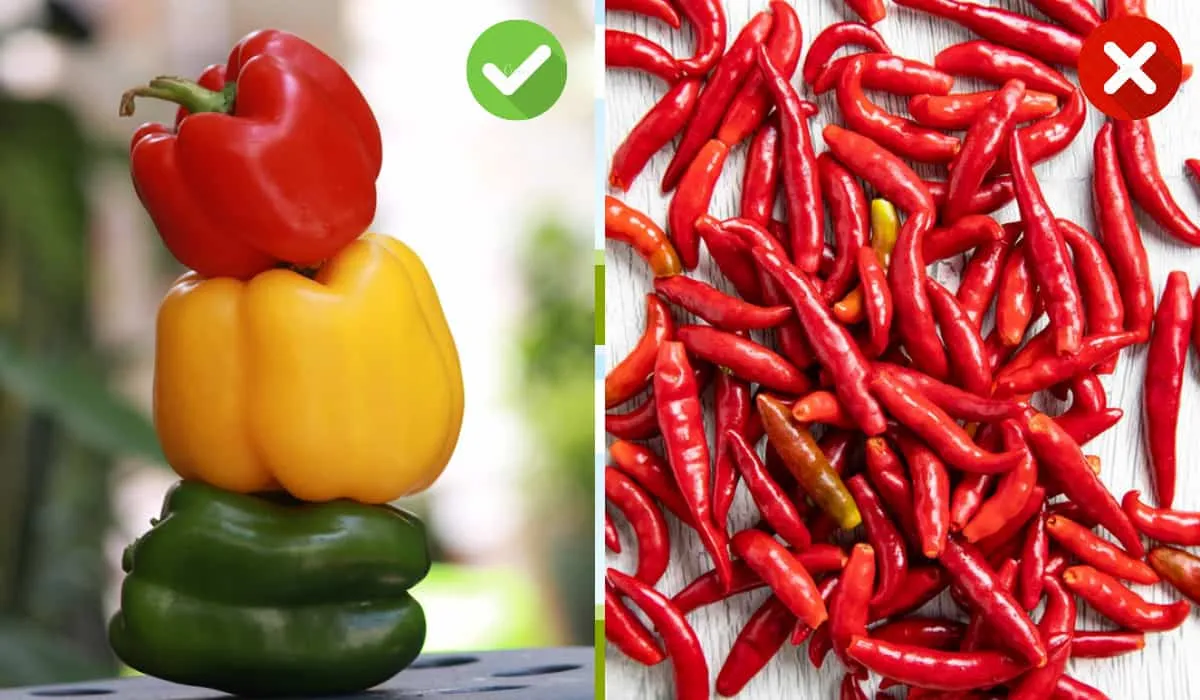So, what’s the verdict? Can hamsters eat bell peppers?
The short and simple answer is Yes.
However, before you make bell peppers a regular in your hamster’s diet, it’s essential to understand the benefits and risks associated with them.
In this article, we’re going to explore why bell peppers could be a fantastic supplement to your hamster’s regular diet and how to serve them properly.

How Much and How Often to Feed Bell Peppers to Hamsters
Bell peppers are indeed a tasty treat for hamsters, but like all good things, moderation is key.
Consider bell peppers as an occasional treat rather than a staple. This is because bell peppers contain sugar and water that could lead to digestive issues or weight gain if overfed.
You might wonder, “How much bell pepper is too much for my hamster?” That’s a great question! It depends on your hamster’s size, age, and activity level.
For instance, a larger, more active adult hamster could handle more bell peppers than a smaller, less active one.
However, these are just guidelines. Always adjust to your hamster’s individual needs and preferences.
Keep an eye on their weight, appetite, and yes, even their poop, to ensure you’re not overfeeding them.
When trying out bell peppers for the first time, start slow. Watch your hamster for any signs of intolerance or allergy, such as diarrhea, vomiting, or itching.
If you notice any adverse reactions, immediately stop feeding bell peppers and consult a veterinarian.
How to Feed Bell Peppers to Hamsters
Now, let’s get down to the fun part—how to prepare those tasty bell pepper treats for your hamster! Here are some steps to follow:
- Rinse the bell peppers under running water.
- Remove the stem—it could be a bit sharp for your little buddy.
- Keep the seeds in; they’re a safe source of fiber and add a fun crunch.
- Serve a small piece of bell pepper in a clean dish or hand-feed them as a bonding activity.
- After a few hours, remove any uneaten bell peppers from the cage—spoiled food can attract flies and mold.
A Quick Tip: Regularly check your hamster’s hoarding spots for hidden food or leftovers. Fresh produce like bell peppers can spoil quickly and cause health problems if left in their cage. Oh, and never feed your hamster food that’s about to go bad or shows signs of mold or fungus.
Which Bell Pepper type is Best for Hamsters?
With so many colors of bell peppers out there—Green, Red, Yellow, Orange—which one is the best for your hamster?
While all bell peppers are safe for your furball, red and yellow ones might just take the cake.
They have a higher vitamin C content and a sweeter flavor that could make your hamster’s culinary adventure a charming delight.
Are Other Peppers Safe for Hamsters?

Here’s a heads-up: not all peppers are safe for your hamster.
Sweet peppers, such as bell peppers, mini sweet peppers, and long sweet peppers, are the only types that get a nod of approval.
Spicy peppers, on the other hand, are a no-go zone. Chili peppers, jalapeno peppers, and cayenne peppers could spell trouble, causing irritation, inflammation, and potential harm to your hamster’s delicate digestive tract.
Healthy Alternatives To Bell Peppers For Hamsters
While bell peppers are a perfectly safe and healthy option for our furry friends, it’s also worth introducing some other fruits and veggies into their meal plan.
Carrots, broccoli, spinach, cucumber, apples, and bananas can all make a delightful and nutritious change for your hamster.
But remember, what goes into your hamster’s diet should always be safe and beneficial for its health.
So, avoid feeding them onions, garlic, potatoes, citrus fruits, and chocolate.
These foods can upset their little tummies and cause health problems.
Can Hamsters Eat Bell Pepper Seeds?
You might be thinking, “What about bell pepper seeds? Are they safe for hamsters?”
Good question and the answer is Yes! Bell pepper seeds are not only safe but also provide some extra protein and fiber for their diet.
So, the next time you’re chopping up a bell pepper, feel free to toss some of those seeds into your hamster’s dish.
Can Baby Hamsters Eat Bell Peppers?
Now, let’s talk about baby hamsters.
These little guys have delicate and developing digestive systems. You might be tempted to introduce them to bell peppers and other fresh fruits or veggies, but hold your horses!
Baby hamsters should avoid bell peppers and other fresh fruits or veggies until they’re at least four weeks old.
Feeding bell peppers to baby hamsters can lead to several health problems, including choking, diarrhea, gas, and bloating.
Even allergic reactions are possible. So, let’s stick with the basics for these young ones until they’re ready.
Conclusion
Bell peppers are a safe, nutritious treat for hamsters when given in moderation and prepared correctly.
Variety is key to a healthy hamster diet. But always remember, if in doubt or noticing any changes in your hamster’s behavior, consult your veterinarian. Your pet’s well-being always comes first!
